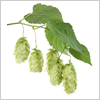
 USA, MI: Michigan’s hops-growing industry reports an interesting season
USA, MI: Michigan’s hops-growing industry reports an interesting season
The Michigan hops-growing industry has had an interesting season, the Traverse City Record Eagle reported on September 11.
Some farms have done well. A few have been hassled by an unexpected insect pest. Some are stumbling under market pressures.
“Sales and marketing, I think, is the big issue — and whether we have the cultivars that brewers are looking for as they’re trying to differentiate themselves in that increasingly competitive marketplace,” said Rob Sirrine, a community food systems educator with Michigan State University’s Extension Service in Leelanau County.
A large number of Michigan growers invested heavily in two or three popular hop varieties, including Cascade, he said, and the law of supply and demand drove down prices during the last couple of years. That led growers to rethink how they grow hops.
About 40 hops operations now are active in Michigan, Sirrine said, including 10 or 12 in northwest Lower Michigan. They range in size from one acre to much larger.
One of the largest operations in Michigan is MiLocal Hops in Williamsburg, which grows on 220 acres. It is doing fine, but has had to make adjustments.
“Over the last two years, MiLocal Hops has ripped out over 40 acres of Cascade, and we’ve diversified that land over six different varieties,” said Sales Director Mike Moran.
“It’s a great hop,” Sirrine said of the Cascade variety. “It’s kind of what started the craft brew revolution.”
Cascade long had been the most-used hop in the industry, he said, and until last year accounted for the most acreage of any hop variety.
But too many new growers planted too many acres of that specific variety.
There wasn’t room in the market for Michigan’s entire crop. Partly because craft brewers strive to distinguish themselves from competitors by creating fresh flavor profiles built atop different hop varieties. Partly because century-old hops growers in the Pacific Northwest have much of the national market locked up in contacts.
“Cascade used to be the backbone of the industry. But there was just so much planted in Michigan that it depressed the price,” said Brian Tennis, founder and owner of Michigan Hop Alliance in Omena.
“We don’t have a ton of Cascade planted,” he said. “We have 15 different varieties total, so if there’s a glut of one hop, we’ve got more than enough other varieties to pick up the slack. It’s kind of like a balanced portfolio.”
MiLocal Hops planted plenty of Cascade hops when it started operations in 2015 at a former golf course in Williamsburg. But it also planted other varieties. So it won’t be hurt, Moran said, by the need to rip up 40 acres of Cascade and replant the land with varieties that can fetch a better price. MiLocal Hops marketing efforts have roped in some large customers.
“Bell’s (Brewery) has supported us from the get-go,” Moran said. “We have Great Lakes Brewing Company out of Cleveland, which is one of the top producers in barrel production and craft. We’ve got a large local following here in Michigan. People buy big chunks of (several) varieties from us.”
Some growers, Sirrine said, have decided to plant different varieties that offer a better price; others have idled their yards this season to see if the price bounces back.
Oversupply wasn’t the only ripple in the hops industry this summer.
An unexpected insect pest chomped its way into some Michigan hop yards. The MSU Extension received reports about problems with the European corn borer, a type of moth that has affected corn production in the Midwest since the 1920s.
“Because of the really late corn season, we think it was looking for a different host plant, and hops just happened to be growing at that time of year,” Sirrine said. “That was a new one for us, because almost every yard we’ve looked in, we’ve seen it, and some are worse than others.”
Tennis said he saw minor effects from the moth infestation in some of the crop he processes. Adult moths lay eggs on host plants, and plant damage can result.
Despite pest problems and issues with oversupply of some varieties, this year’s northwest Lower Michigan hop crop looks solid.
“This will be the best year we’ve ever had, in terms of quality and quantity,” said Tennis. “It started out really cold and rainy, but the plants really rebounded and look pretty amazing.”
“We’re looking better than we ever have,” Moran said. “We’re set up to evolve with the changing industry.”
The region’s hops industry likely will remain a big player in the local agriculture scene.
“Hops are photo-period dependent,” Sirrine said. “Right around that 45th Parallel — if you look all the way around the world, in both the northern and southern hemisphere — that’s where hops grow, because it’s the perfect amount of day length to get them out of the ground and up 18 feet right in time for them to flower.”
“Michigan in general is a really good spot for growing hops,” he said.
Wstecz
E-malt.com, the global information source for the brewing and malting industry professionals. The bi-weekly E-malt.com Newsletters feature latest industry news, statistics in graphs and tables, world barley and malt prices, and other relevant information. Click here to get full access to E-malt.com. If you are a Castle Malting client, you can get free access to E-malt.com website and publications. Contact us for more information at marketing@castlemalting.com .





